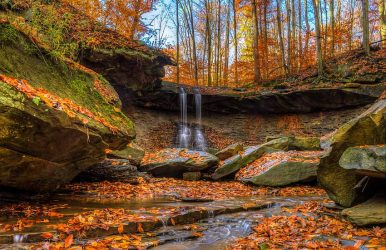What Are The Places To Visit In Meghalaya? – Travel Guide
BY Nabamita Aug 17, 2022
Meghalaya, or the Abode of Clouds, here you will find that nature has to give. It is one of the best places for its biodiversity richness. Known best for its famous monsoon seasons, Meghalaya has the most dramatic natural terrains with rich cultural festivals. Having such beautiful natural diversities, which are among the best places to visit in Meghalaya. The tribals of Garos, Jaintias, and Khasis make up the majority of the population. Meghalaya: Abode Of Clouds! Located in the northeastern parts of India, with Shilong as its capital. During the British rule of India, it was dubbed the “Scotland of the East.” With a range of beautiful terrains, Meghalaya is surely going to surprise your imagination. With beautiful greenery everywhere, with forests, valleys, waterfalls, and mountains, that are one of the best places to visit in Meghalaya. But since Meghalaya is known for its monsoon seasons, what is the best time to visit there? What Is The Best Time To Visit Meghalaya? Since Meghalaya is one of the wettest places in India, with the occasional cloudbursts and landslides, you need to know the best time to visit there. Weather Condition In Meghalaya Oct-Feb = 9c Apr-Jun = 21c June-Oct =15c Peak Season When the temperature is between 16c and 31c, that is the best time to visit Meghalaya. This will probably be from April and June. During this time, Meghalaya has the optimum temperature for you to explore the place. Shoulder Season From the months of November to March receives a moderate amount of tourists, as the weather is cold and misty at the same time. Low Season The lowest season for tourism in Meghalaya is from July to October. During this time, the state receives about moderate to heavy rainfall. Best Places To Visit In Meghalaya Now that you know what the best time to visit Meghalaya is, you need to know what are the top Meghalaya tourist places. 1. Cherrapunji Popularly regarded as the wettest place on Earth, Cherrapunji has the best lush greenery you will ever see. Here you will find the highest rainfall any time of the year. Tourists from all over the world come here to see the most beautiful waterfalls, like Dain-Thlen,Nohkalikai, and Kyrem. Cherrapunji is one of the best places to visit in Meghalaya. Specialty - An abundance of natural scenic beauty and environmental attractions. Places To Stay - Polo Orchid Resort Cherrapunjee, Jiva Resort Cherrapunjee and Saimika Resort. Attractions - Krem Mawmluh, Wakaba Falls, Double Decker Living Root Bridge, and also Nohkalikai Waterfalls. How To Reach - From Guwahati, it's 166km, And from Cherrapunji Umroi Airport, it's 79km. 2. Shillong Known as the Scotland of the East, Shillong is the capital of Meghalaya. Away from the bustling life of the city, Shillong has beautiful forests, hills, and mesmerizing scenic beauty. Shillong is considered the Meghalayan Gateway. Popular landmarks of Shillong are Elephant falls, Maharam, Lady Hydari Park, Bhowal, Mylliem, and Langrim. Specialty - Mesmerizing view, the beauty of nature, and its popular landmarks. Attractions - Elephant falls, Maharam, Lady Hydari Park, Bhowal, Mylliem, and Langrim. Places To Stay - Pinewood Hotel, The Loft-Executive Inn, Hotel Polo Towers Shillong, and Tripura Castle. Location - East Central Meghalaya. Best Time To Visit - From September to May. 3. Mawsynram Out of all the places in Meghalaya, Mawsynram receives the most rainfall each year. This is why here you will find the most greenery and beautiful green hills and valleys. Mawsynram receives about 11,872 mm of rainfall each year. Specialty - The most beautiful waterfalls. Location - The East Khasi Hills, Meghalaya. Best Time To Visit - From April to June. 4. Balpakaram National Park Known as a traveler’s paradise, the Balpakaram National Park is a “Land of Spirits” for its rich natural biodiversity. With its beautiful wildlife with animals like Tiger, Leopard, Deer, Buffalo, Elephant, and Red Panda. Specialty - It is rich in natural biodiversity. Location - Western Meghalaya and Garo Hills. Best Time To Visit - From October to March. Entry Free - Free. 5. Nohkalikai Falls The Nohkalikai Falls is the 4th most noted waterfalls in the World. The height of this fall is about 335 meters from the cliff to the ground. The falls are considered “the pride of the territory of Meghalaya.” Specialty - It is like paradise with an extraordinary scenic view. Entry Fee - INR 10. Timing - From 8 am to 5 pm. 6. Double-decker Living Root Bridge Located in Cherrapunji, the double-decker living root bridge is famous all over, as the bridge is made up of roots. The roots are of rubber trees. The bridge is about 3km long and about 2400ft in height. Specialty - The oldest of natural bridges. Location - Cherrapunji, Meghalaya. Best Time To Visit - Anytime other than from May to September, due to the slippery. Trek Time - It takes about 4 to 6 hours. 7. Kyllang Rock This extraordinary rock is made entirely out of red stone. The rock is 54ooft above sea level and 1000ft in width. The hike up the rock gives a beautiful scene with rhododendrons and shrubs. Specialty - It is on the highest points in all of Meghalaya. Location - West Khasi Hills, Shillong, Meghalaya. Best Time To Visit - Anytime, except the monsoon. Read Also: Which Is The Largest Freshwater Lake In India? 8. Elephant Falls Meghalaya is known to have the best waterfalls in all of India. And Elephant Falls is definitely one of that beautiful waterfalls. It is called Elephant falls as it has an Elephant-shaped stone at its foot of it. It is one of the best places to visit in Meghalaya. Specialty - The falls are surrounded by beautiful scenic beauty. Location - It is only 12km from Shillong. Best Time To Visit - During Monsoon. Read Also: Top 10 Famous Wonders Of India Frequently Asked Questions (FAQs): Now that you know what the best time to visit Meghalaya and the best tourist places is, you won’t have any other problems. But if you do, here are some questions asked by other people. 1. What Is The Popular Place Of Meghalaya? The most popular Meghalaya places to visit are:1. Mawsynram2. Nohakalikai Falls3. Mawlynnong Village4. Umiam Lake5. Seven Sisters Falls6. Living Root Bridges 2. Does Meghalaya Have Snow? Though the state of Meghalaya has a higher elevation, it doesn’t receive any snowfall throughout the year. But due to humidity and low temperature, frost forms which can look like snow but are not. 3. What Is Famous Food Of Meghalaya? The food that is famous in Meghalaya is a spicy preparation of fish or meat and rice. They are great at rearing pigs, goats, cows, ducks, and fowl for their meat. Visit Now! If you are an avid nature lover, then visiting Meghalaya should definitely be on your bucket list. There are some beautiful places to visit in Meghalaya. And if you are a mountain lover, then you need to visit here once. Hopefully, this article encourages you to book your tickets soon for Meghalaya. Let us know in the comments where in India you wanna visit next. Read Also: Exploring The Unexplored: Which Is The Best Time To Visit Darjeeling? Top 5 Best Tourist Places In Coimbatore – Travel Guide Best Places For River Rafting In India











